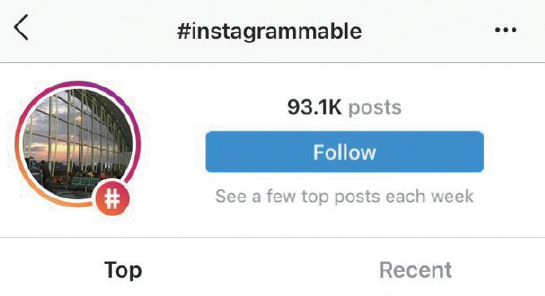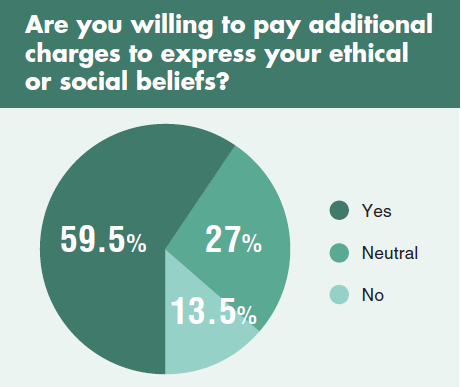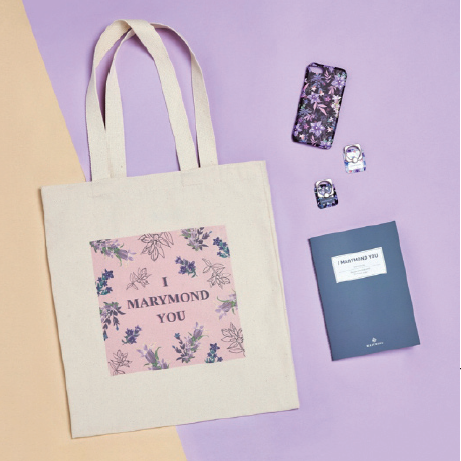December is the month for closing the year and planning for the next. Many Kingos may make plans for saving and managing their spending habits for the new year. Looking into spending habits of university students and the possible marketing strategies of companies might help students manage their consumption habits more practically and thoroughly. Therefore, the Sungkyun Times (SKT) looks at the economic activities of university students and their significance as consumers, analyzes their expenditure by survey results, and examines the implications of their consumption.
Economic Activities of University Students
Characteristics of University Students’ Economic Activities
Pocket money and part-time jobs are the main sources of university students’ income.

According to a survey that the SKT conducted with 200 students from SKKU and other universities between November 6th to 8th, about 67% of the respondents said that they spend most of their money on food because they usually eat out. This was followed by fashion, household goods, and cosmetics. These results can be interpreted that university students also have a lot of interest in fashion and cosmetics, and students who live alone or live in a school dormitory buy household items for themselves. Also, when purchasing products, 76% of the respondents said that they consider price as the most important factor, 52% said quality, and about 48% said design and appearance. University students tend to regard price as the most important criterion because their income is limited, which makes them consume mostly at convenience stores, Daiso, Miniso, and high-street cosmetic shops that offer products at a lower price. Although their purchasing power might not be that influential for now due to their limited economic activities, university students are thought to be the main generation of the future economic and consumer markets.

University Students as the Key Generation of the Future Economic and Consumer Market
University students are transitional consumers between adolescence and adulthood. Their roles as consumers extend as they get to earn money on their own, unlike middle school and high school students, and the influence of parents diminishes. When university students graduate and get a job, they are generally in their late twenties or early thirties. Consumers in their twenties are expected to affect both the economic and the consumer market in that they reach their thirties sooner, which is when they are expected to have a higher purchasing power. That is, they become part of the working age population and get paid regularly. Their purchasing power increases as there are more products and services they can afford. Therefore, companies often target university students considering their future benefits. For example, Woowa Brothers, a successful delivery service application in Korea, targets customers in their twenties and thirties, including university students, as their main customers. It applies cultural codes on its brand identity and promotes it with fun characters and catchphrases to attract young customers and build its influential image. Many companies in other industries also acknowledge university students as powerful potential consumers because they will reach their thirties and have huge purchasing power in a few years even though their purchasing power might be limited for now.
Characteristics of University Students’ Consumption
Taking Photos of What They Purchase
Many university students take pictures of what they buy or experience on social media, including Instagram and Facebook. According to the SKT research, about 71% of respondents use social media for more than an hour per day. They tend to share their daily lives posting about their purchases. Social media users tend to feel a sense of accomplishment when they discover hot items and post about them as if they were on a mission or want to feel connected with others by sharing online. In fact, about 50% responded that they think taking pictures of their purchases is helpful to feel satisfied and happy to some degree. “Normal crush,” for example, is a neologism in Korea which means pursuing a simple and comfortable atmosphere and uploading on social media. University students tend to visit atmospheric cafes or fine restaurants with delicious food and upload pictures of food or the interiors to social media like Instagram using the hashtag #Instagrammable. It means pictures or places are worth uploading to social media. There are, for example, currently 93,100 posts in total with the hashtag #Instagrammable on Instagram. Overall, university students’ high usage of social media might show their own culture of taking photos of what they buy in accordance with “normal crush.”

Self-Satisfaction and Preference
According to the survey conducted by the SKT, 70% of students answered that they buy products that match their own preferences, regardless of what other people think. Such products include unique clothes or items which do not meet general tastes, and items that may be useless but fancy enough to buy. In fact, lots of university students buy goods which have no practical use. This trend has occurred due to the tendency that university students spend money for temporary happiness, instead of saving for the future. Since this kind of consumption solely depends on one’s pleasure, however, it tends to lead to impulsive purchases. In fact, 70% of respondents in the SKT survey that answered they had purchased impulsively over the previous month. Among them, 79.4% said that they thought impulsive purchases were effective for relieving their stress. These tendencies are also reflected in a newly coined Korean word tangjinjaem, a compound word of tangjin, meaning wasting time and money, and jaem, meaning fun in Korean. In other words, it means spending money whenever and on whatever for fun, which clearly shows current university students’ consumption habits.

Meaning Out
“Meaning out,” a compound word of “mean” and “coming out” used in Korea, is the action of expressing an individual’s free will, preference, political faith, or social belief through consumption. When the SKT asked university students whether they were willing to pay an additional amount of money for their “meaning out,” more than half of them showed positive responses, and negative responses only accounted for 13.5%. Some university students usually carry out actions by purchasing products from companies which donate profits to help resolve social problems, or by using hashtags on social media. The lifestyle brand Marymond, for example, donates half of its profits to help to resolve the Japanese military sexual slavery problems. Likewise, through social enterprises like “Gurus” a shoe company which plants green trees in developing countries, and “Walkwith” a lifestyle brand which makes products with designs for people with mental disabilities, many students practice “meaning out” in daily life. This trend projects university students’ altruistic consumption habits. Therefore, “meaning out” starts with empathy for minorities, especially regarding gender, race, and social class.
Implications of University Students’ Consumption Habits
Needs for Marketing Strategies Based on Uploading Social Media Posts
University students usually take photos and post on social media to prove that they purchase unique products. Therefore, it is important for companies to induce young customers to advertise the companies’ products and services by proving the products’ or services’ unique features on social media. For instance, these days, many sensuously designed cafés and restaurants enable customers to take shots of their interiors and post them online. In this way, owners do not have to promote as directly as before because they go viral more easily thanks to social media. As most critical aspects of a photograph are the visual features, companies should draw consumers by strong first impressions. Thus, making positive impressions that stimulate university students into uploading their experiences about their consumption is crucial. Also, products which are often photographed get a better bang for their buck, and do not require other advertising strategies from companies other than viral marketing. Furthermore, offline markets must also react to trend changes by creating special zones that display popular items on social media. For instance, when a Korean retailer e-mart recognized that items that were popular on social media increased sales offline, it reorganized stores in a different way to target the customers. The market manager of the branch made special zones, which gathered popular items in one spot in front of the entrance or the counters at stores. Therefore, offline markets should reflect changes in the online consumption trend of university students.
Companies' Reactions to Personal Taste and Impulsive Purchasing
Unique products allow university students to stand out. A limited edition strategy makes university students more competitive with their friends and raises their purchasing desires since purchasing scarce products can be a way to express oneself. If consumers are satisfied with rare products and purchase products from a brand, they consequently express brand loyalty. Active use of the phrases “only available here” or “make your own value” is required for this strategy. Moreover, a product which requires a shorter amount of time for consumers to purchase may have a bigger effect on impulsive purchasers. According to research by the Korean Journal of Advertising, sending differentiated advertising messages based on the level of impulsive purchasing characteristics can maximize promotion effects and improve brand awareness. Respondents who were more impulsive showed a more favorable reaction when they received unfavorable messages, while respondents who were less impulsive reacted more to promotive ones. Such tendencies might consequently provoke consumers impulsive feelings as if they really needed the product too. Also, since university students’ impulsive purchases tend to be influenced by their shopping experiences, companies should devise experience marketing strategies. Experience marketing is the process of managing the experiences of customers by contacting a brand directly or indirectly, from the information search stage to the evaluation stage. Above all, companies need to focus not only on making profits from university students’ impulse purchases but also turning them into long-term customers.
University Students’ Ethical Consumption
Ethical consumption is a type of consumer behavior where consumers consider the influence of their purchase on other people, society, and the environment, which results in
consuming ethical products, such as eco-friendly products and social equality products. The supply of fair-trade products may increase, which results in the expansion of the ethical consumption market. According to Statistics Korea, sales from fair trade increased from 71 million in 2004 to 17.3 billion in 2015. Crowd-funding, a sub-market of the ethical consumer market, produces products or services by raising funds online from people who want to achieve the same social purpose. “Drsk,” for example, is a school club of SKKU where Kingos run projects making school goods. With its profit and funds from crowd-funding, the club provides free gifts to freshmen at the SKKU entrance ceremony. Kingos who have the same aim as Drsk also help fund the project, showing their opinions toward the university. Therefore, consumers’ empathy is required in ethical marketing strategies. As university students’ ethical consumption behavior goes along with a company’s social
responsibilities, it is not only the selling activities but also the product making process that should be considered. Both ethical consumers and corporations have to go through the product making process to find out if the production stages might damage nature or exploit humans and animals. In the act of ethics, the harmony of two groups, consumers and corporations, may contribute to the expanding of university students’ ethical consumption.

University students are considered as important consumers regarding their future consumption because they are going to be working and have great buying power in the market. Apart from their positive consumption patterns, reforming some of their consuming behaviors, such as extreme impulsive spending habits, will help university students to conduct better spending activities. The SKT hopes that Kingos will become smarter consumers in the new year.
